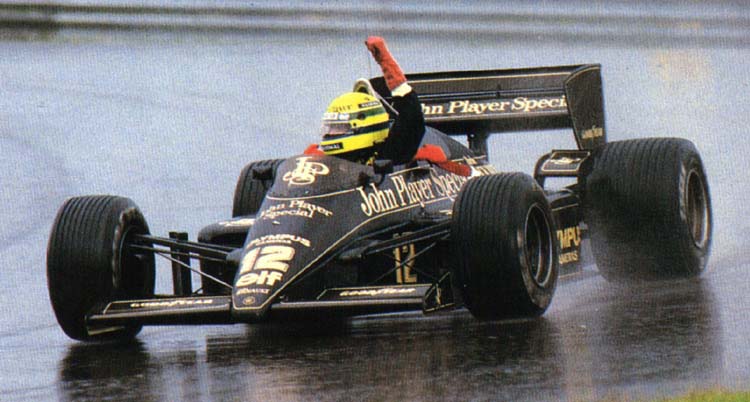- Login or Register
No account yet? Sign up
Sorry, I wasn’t clear. I see no problem between Newton and Bernoulli; the latter creates the delta P and the former reacts thereto.gato azul wrote:different way to skin the cat - I suppose
in your Newtonian way of thinking, less upward momentum (less wake height) would require less energy, which has to come from somewhere.
The end result would be the same, just the way to illustrate it is different - IMHO
the plateau in Cl around 38° flap angle correlates with an plateau in Cd as well, post stall (>48° flap angle) Cd reduces as well - which disagrees with the conclusions drawn based on the "thin airfoil" stall theory.Rear Wing Tests
The lift and drag coefficients, measured in the wind tunnel, for the rear wing in free-stream are shown in Figure 8 below.
The CFD predictions are provided on the same graph for comparison.
The wind tunnel results showed a trailing edge separation on the rear most flap beginning at 38degrees.
By 40 degrees the underside of this flap was fully separated, resulting in a plateau in the CL curve.
The flow on the underside of the main plane remained attached until 48 degrees, beyond which a complete leading edge separation was observed.
The considerable difference between the stall angles predicted by CFD and measured in the wind tunnel was most likely due to the extremely small aspect ratio of the wind tunnel tested wing (1.72).
Again, the wind tunnel drag is believed to be higher than predicted from CFD due to induced drag.

Assuming your data is correct:n smikle wrote: The model with the Ducts on the pylon had about 13 to 20% more down-force but only about 6% more drag. So it is basically a blown wing.

This is the simplest way I know to get the resultant forces over the wing, so I just work with it.Thanks for your answers, but I fear that only integrating the surface pressure distributions over the area of the wing will not give accurate values for overall drag.
I take it as a top down approach and take the wing as a simple free-body. I take it as a scientific truth that he force felt by the wing is only the differences in air pressures across it, whether it is induced drag, from drag etc.. the way the force is developed I am not really focusing on that and it will going too deep.It's not that you make anything wrong, rather then a limitation of the method your software uses.
The effects of induced drag will not be properly represented by only integrating surface pressures.
Are your values "time averaged" values, or are you (your software) assuming a steady flow condition at all times?
I can do a transient analysis, but every time point will have its own set of data so that would be gigabytes of data. For example I could accelerate the car up to 200km/hr then save the results of say every second and and review the data, but for my intentions I don't think I will learn anything more than a steady state test. There might be some significant transient effects that Lotus have to deal with in real life to get real world tenths of a seconds, but I think a simple CFD demonstration should be good enough to get a basic Idea of what Lotus is doing. I think of it as a straight line test at constant speed.Effects like vortex shedding etc, and the flow in the "dead zone"/separation areas are highly unsteady in nature, so can be only represented as a time averaged value in terms of their contributions for a single Cl or Cd value.
I set the control volume a few meters ahead and behind the car.. not much above and below though. It just takes more calculation time if I make it bigger the results will be different but I don't think the story will change that much.Nevertheless, keep up the good work, I like to see the evolution of your models, just keep in mind that every tool has it's limitations.
How large is the "control volume" you chose in your model? Do you look at the pressure distribution in the wake too? If you/or your software chooses the control volume (air volume affected by the wing) too small, you will get discontinuity at the boundaries of your control volume.
In a wind tunnel with a limited test section area, you would need to measure the pressure distribution along the walls as well, and account for them in your overall model, to better predict total drag.
gato azul
43
So assuming the system is not for stalling:amc wrote:I said before that I didn't think the wing was stalled - that VD just increased static pressure behind the wing. This would appear to contradict the stall theory where we think that the boundary layer separates below the wing, reducing the lift produced and therefore induced drag. However, what if the boundary layer has been separated (the wing is stalled) but there is still a boundary layer in place...


That is what I am saying, read my previous post....bhallg2k wrote:Don't confuse the fact that the wing is not being stalled with the idea that the system is in place to keep air flow attached.